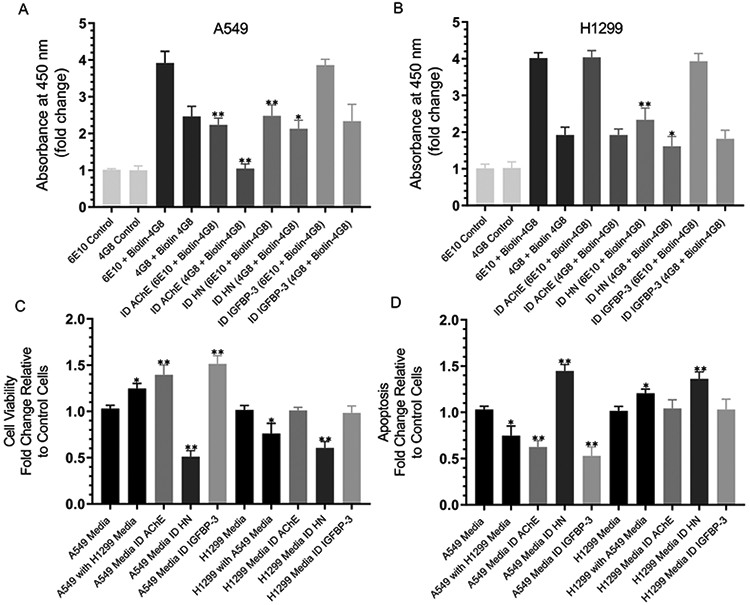Figure 11.

Immunodepletion of HN from an A549 or H1299 cell-conditioned medium increases the relative amount of oligomer vs the total amount of Aβ, decreasing cell viability and increasing apoptosis. (A and B) Cells (0.2 × 105 cells per well) were seeded in 96-well plates in a 10% FBS-supplemented medium. The next day, the cells were incubated in a serum-free medium for 72 h and then immunodepleted (ID) of AChE, HN, or IGFBP-3 as described in the Experimental Procedures and in the Figure 9 legend. The antibodies 6E10 or 4G8 were bound (1:1000 dilution) to the ELISA wells. The wells were blocked and then incubated with 300 μL of the ID medium (0.5 μg/μL). Biotin-4G8 was then added, and the signal was processed as described in the Experimental Procedures. The fold change relative to the controls using anti-6E10 and anti-4G8 antibodies and 300 μL of the medium not incubated with cells was calculated. Viability (C) or apoptosis (D) of the A549 or H1299 cells was assessed by the MTT assay or the annexin V method, respectively. Cells were seeded in 96-well plates at 0.2 × 105 cells per well in 200 μL of a 10% FBS-supplemented medium. The next day, the cell monolayers were incubated in a serum-free medium for 12 h and then treated with the immunodepleted medium for 48 h, with the medium containing the specific components in the various treatments replaced every 12 h. Data were processed using the GraphPad 8.3.1 software. The graphs summarize the results expressed as the mean ± SD of three separate experiments, each of which was performed in triplicate. Asterisks (*) indicate a statistically significant difference relative to the control. The absence of asterisks indicates no significance (Mann–Whitney test, *p < 0.05 and **p < 0.01).
